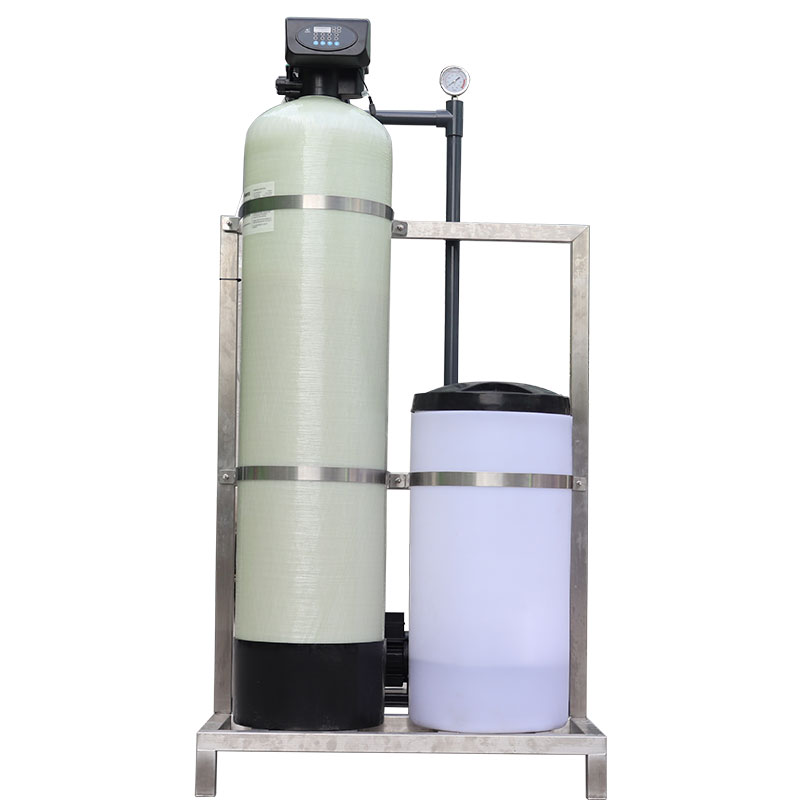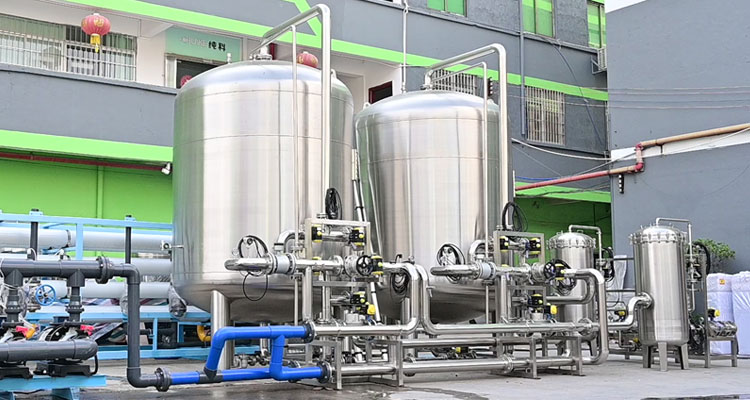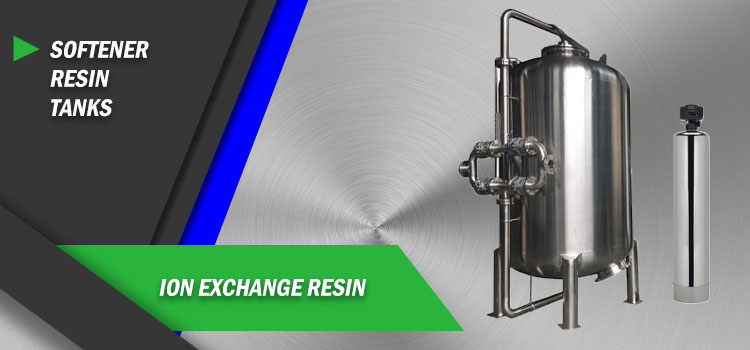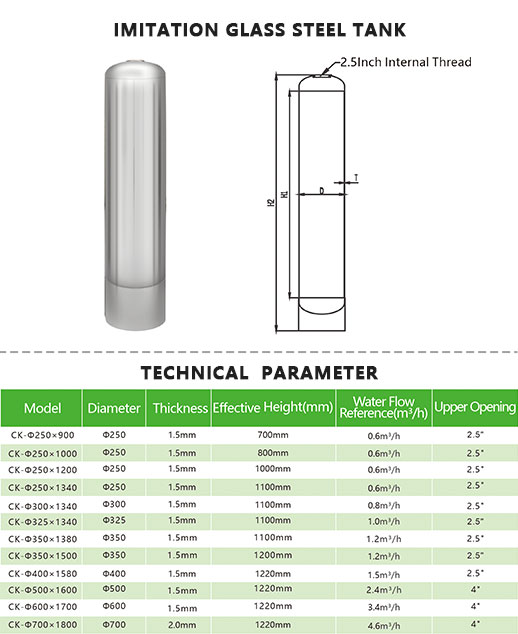What does a 60-liter water softener mean?
In the field of water treatment, water softeners are an important device, especially in hard water areas, where water softeners are more commonly used. The model of a water softener is usually identified by its processing capacity, such as "60-liter water softener", but whether this "60 liters" refers to water consumption or water output may confuse many people.
This article will delve into the meaning of a 60-liter water softener to help readers better understand the working principle of this device and what 60 liters represents.

What is a water softener?
A water softener is a device specifically used to remove calcium and magnesium ions from water. Its main purpose is to convert hard water into soft water. Hard water contains high concentrations of calcium and magnesium ions, which will form scale on water pipes, boilers and other equipment, resulting in reduced equipment efficiency or even damage. In addition, hard water also has adverse effects on skin and hair, and using a water softener can effectively solve these problems.
How a water softener works
Water softeners usually use ion exchange to soften water. Specifically, the water softener contains resin particles filled with sodium ions. When hard water passes through the water softener, the calcium and magnesium ions in the water are exchanged with the sodium ions on the resin, the sodium ions enter the water, and the calcium and magnesium ions are captured by the resin. After this process, the hard water is converted into soft water.
In the water softener, the surface of the resin particles carries a large number of sodium ions. When hard water flows through the resin bed, the calcium and magnesium ions in the water are exchanged with the sodium ions on the resin, the calcium and magnesium ions are captured by the resin, and the sodium ions enter the water. After the ion exchange, the hardness of the water is greatly reduced and becomes soft water.

What does a 60-liter water softener mean? What does "60-liter water softener" mean?
When discussing water softeners, you often see model logos such as "60-liter water softener". For this logo, many people may mistakenly believe that 60 liters refers to the water consumption or water production of the equipment, but in fact, this is not the case.
What 60 liters really means
The "60 liters" in "60 liter water softener" does not refer to the water consumption or water production of the device, but to the volume of resin contained in the water softener. This means that this water softener contains 60 liters of resin material. The volume of the resin directly determines the softening capacity of the water softener, because the larger the volume of the resin, the more calcium and magnesium ions it can exchange, and the larger the amount of water it can treat.
The size of the resin volume directly affects the treatment capacity of the water softener. Generally, the larger the volume of the resin, the more hard water the water softener can treat. For a 60 liter water softener, the amount of water it can treat can usually meet the daily water needs of a medium-sized family or small commercial place.
The amount of water treated by a 60 liter water softener depends on the hardness of the incoming water. Generally speaking, the higher the hardness of the incoming water, the faster the exchange capacity of the resin is consumed, and the amount of water treated is correspondingly reduced. Generally, 60 liters of resin can treat thousands to tens of thousands of liters of hard water, depending on the hardness level of the water quality and the design of the water softener.
Water consumption vs. water output of water softener
Although "60 liters" refers to the volume of resin, the water consumption and water output of water softener are also issues of concern to users. These two parameters are closely related to the operating efficiency, maintenance frequency and water quality improvement of the equipment.
Water consumption of water softener
The water consumption of water softener is mainly reflected in the regeneration process. After a period of use, the sodium ions of the resin will be replaced by calcium and magnesium ions, and lose the ability to soften water. At this time, the calcium and magnesium ions in the resin need to be flushed out through the regeneration process and the sodium ions are re-injected.
During the regeneration process, the water softener needs to use a certain amount of water to clean the resin bed. This part of water is called "regeneration wastewater" and is the main water consumption of the water softener. The amount of regeneration wastewater of a 60-liter water softener depends on the design and operation settings of the equipment. Usually, regeneration may require tens to hundreds of liters of water.
Water output of water softener
The water output of a water softener refers to the amount of hard water that the equipment can handle per unit time during normal operation. For a 60-liter water softener, its water output is usually enough to meet the water needs of daily households or small commercial places.
The amount of water output is affected by many factors, including inlet water hardness, water pressure, resin exchange efficiency, etc. Generally, the larger the water output, the more efficient the water softener is, and it can process more hard water in a shorter time.

What factors affect the performance of a water softener?
Although a 60-liter water softener has a certain processing capacity and water output, in actual use, the performance of the water softener will be affected by many factors. These factors include inlet water hardness, resin quality, water pressure, etc.
Inlet water hardness is one of the most important factors affecting the performance of a water softener. The higher the hardness, the faster the exchange capacity of the resin is consumed, and more frequent regeneration is required. For areas with higher hardness, users may need to choose a water softener with stronger processing capacity or increase the regeneration frequency.
The quality of the resin directly affects the treatment effect and service life of the water softener. High-quality resins have strong ion exchange capacity, can effectively remove calcium and magnesium ions in water, and have a long service life and are not easily contaminated or damaged.
Water pressure is also a key factor affecting the performance of a water softener. Low water pressure may cause the softener's treatment efficiency to decrease, while high water pressure may damage the equipment. Generally, the softener needs to operate within a certain water pressure range to ensure the best treatment effect.
What are the applicable scenarios of the 60-liter water softener?
The 60-liter water softener has a certain treatment capacity and is suitable for multiple scenarios, including homes, hotels, restaurants, small factories, etc. This equipment is particularly suitable for places with large daily water consumption and high water quality requirements.
For medium-sized families, the 60-liter water softener can meet daily water needs and ensure the improvement of household water quality. Especially in hard water areas, the use of a water softener can effectively reduce the formation of scale, extend the service life of household appliances, and improve the daily water experience.
In commercial places such as hotels and restaurants, water quality improvement is also crucial. The 60-liter water softener can meet the water needs of these places, ensure high-quality services, and reduce equipment maintenance costs.
Some small factories need to use soft water during the production process to ensure product quality and the normal operation of equipment. The 60-liter water softener can provide these factories with a stable supply of soft water to meet production needs.

How to choose the right water softener?
Choosing the right water softener requires considering multiple factors, including the amount of water used by the home or site, the hardness of the incoming water, and the space in which the equipment is installed. For most homes and small commercial sites, a 60-liter water softener is sufficient to meet daily needs, but for users with higher water quality requirements, you may need to choose a larger capacity or more efficient water softener.
When choosing a water softener, you first need to evaluate the daily water consumption of your home or site. If the water consumption is large, it is recommended to choose a device with a stronger processing capacity to ensure that the device can meet peak water demand. Secondly, understanding the hardness of the incoming water is an important step in choosing a water softener. Water with higher hardness requires a water softener with a stronger processing capacity to ensure effective improvement of water quality. Finally, the installation space of the water softener is also a factor that needs to be considered. A 60-liter water softener is usually of moderate size and can be installed in the water system of a home or small commercial site. But before choosing, it is best to measure the size of the installation location to ensure that the device can be installed smoothly.




